EFD Team

Top row from left to right: Scott Speckart (MS/PhD), Chad Nielson (MS 2012), Daniel Alexander (MS), Tim Price (MS)
Bottom row: Eric Pardyjak, Bhagirath Addepalli (MS/PhD), Derek Jensen (MS/PhD), Nipun Gunawardena (MS/PhD), Sean Moran (MS), Estel Blay-Carreras (visiting PhD student from Barcelona). Photo Spring 2012.
People
Eric Pardyjak - EFD Team Leader
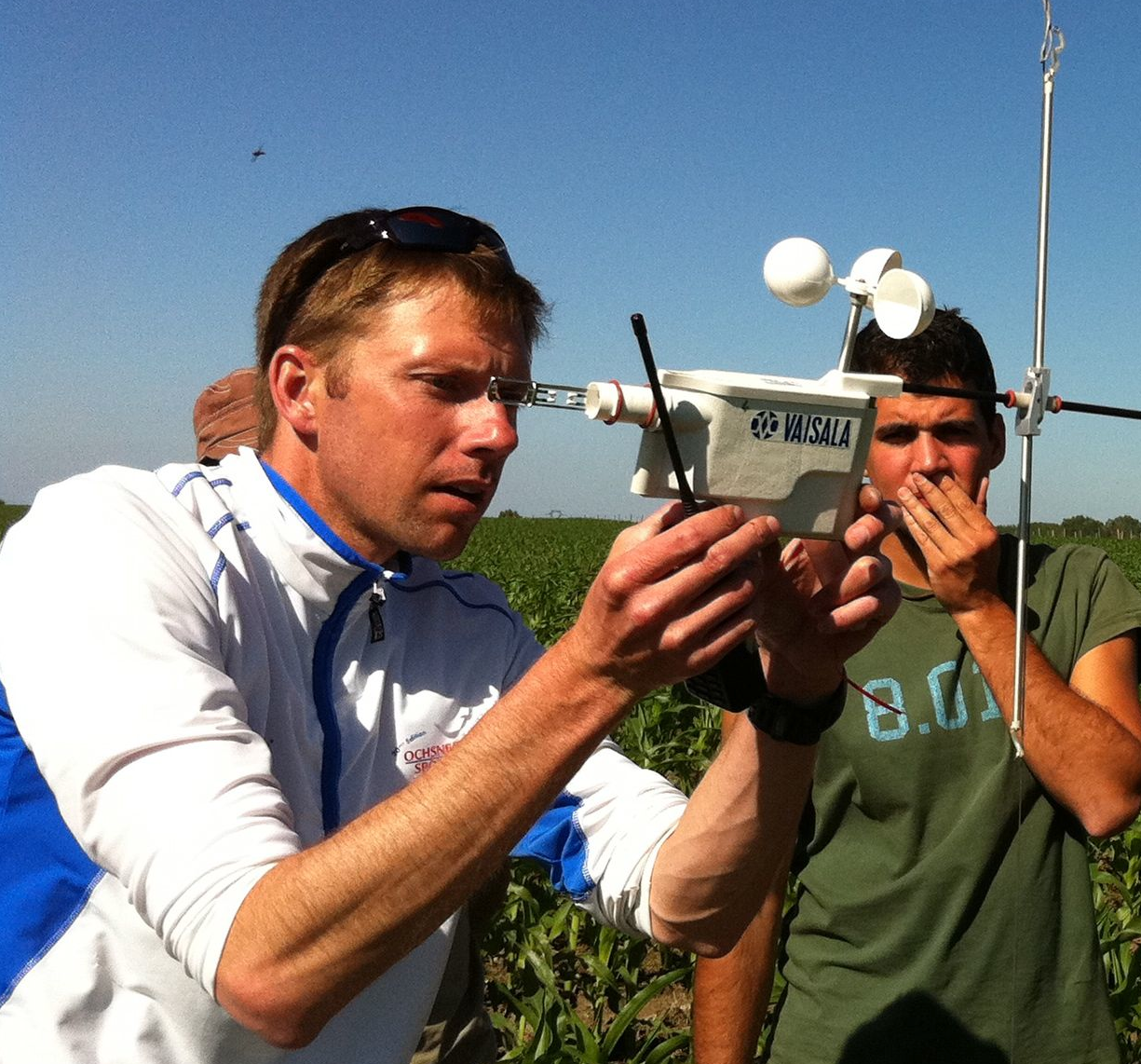
Hometown: Rochester, NY
Undergraduate: Michigan State University - Mechanical Engineering
MS: University of Wisconsin, Madison - Mechanical Engineering
PhD: Arizona State University - Mechanical Engineering
Research Interests: Environmental Fluid Dynamics
Contact: pardyjak@eng.utah.edu
CV: Pardyjak's curriculum vitae
Students, Post-docs and Visitors
Arash Nemati Hayati

Hometown: Tehran, Iran
Undergraduate: K.N. Toosi University of Technology, Iran
Program: PhD (Graduated 2018)
Current Position: Advanced Analytics Team Lead at Boston Children's Hospital
Research Interests: Atmospheric and Oceanic flows - Urban Flow Modeling - Computational Fluid Dynamics - Biomechanics and Sports Engineering - Turbomachinary - Two-phase and Free-surface flows.
Publications:
Contact: a.nematihayati@utah.edu
Google Scholar LinkBhagirath Addepalli
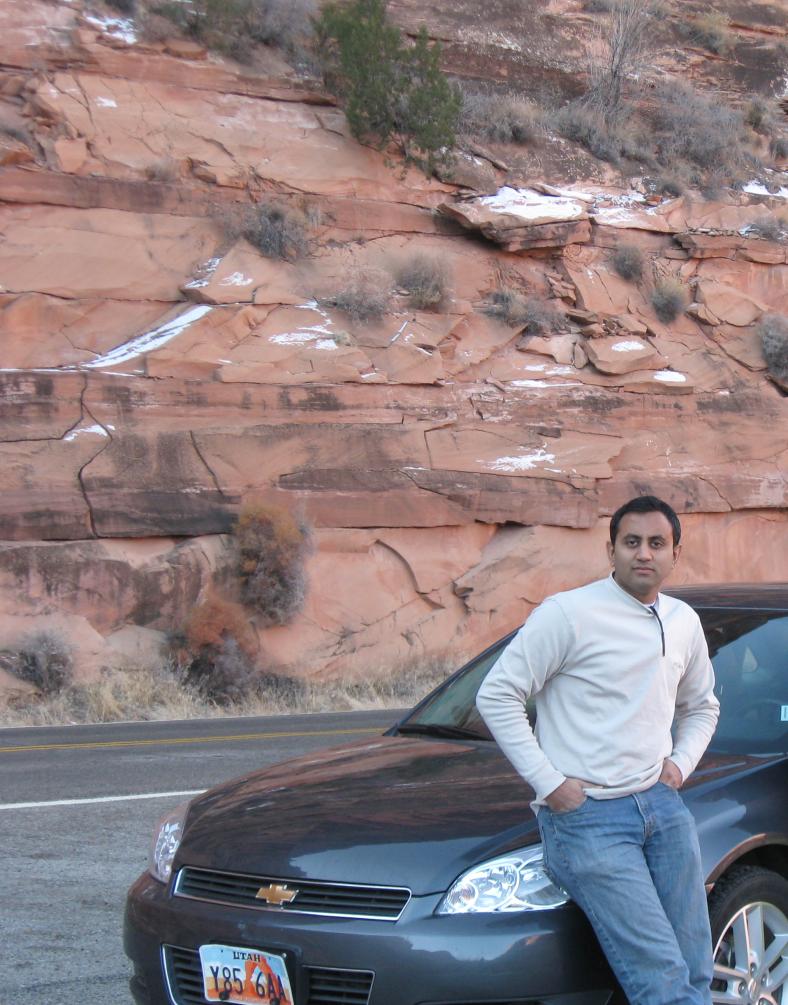
Hometown: Hyderabad, India
Program: PhD (Graduated May 2012)
Current Position: Microsoft Program Manager
Research Interests: Fundamental and applied research in fluid dynamics, inverse and optimization techniques, and statistical modeling and analysis of data. Specifically, interests include: laboratory experiments, computational fluid dynamics, Lagrangian random-walk modeling, development of novel case-specific objective functionals (metrics) for inverse problems, development of efficient and robust optimization and inversion techniques spanning deterministic, stochastic (frequentist), and Bayesian methods, multiple criteria decision making (MCDM - Pareto optimality), linear and nonlinear regression techniques for stochastic modeling, statistical modeling of time series data, model selection in inverse problems.
Publications:
A) Journal Publications / Pre-prints:
a) Addepalli, B., K. Sikorski, E.R. Pardyjak and M.S. Zhdanov. Source characterization of atmospheric releases using stochastic search and regularized gradient optimization. Inverse Problems in Science and Engineering, 2011. 19(8): p. 1097-1124.
b) Addepalli, B. and E.R. Pardyjak. A pseudo-metric to handle zero measurements and predictions in atmospheric inverse-source problems. Under review. Submitted to Inverse Problems in Science and Engineering.
c) Addepalli, B. and E.R. Pardyjak. Investigation of flow structure in step-up street canyons. Ready to be submitted to Boundary Layer Meteorology. Pre-print available upon request.
d) Addepalli, B. and E.R. Pardyjak. Study of flow fields in asymmetric step-down street canyons. Ready to be submitted to Boundary Layer Meteorology. Pre-print available upon request.
e) Addepalli, B., E.R. Pardyjak, P. Willemsen and D.E. Johnson. Urban form optimization for air quality applications using simulated annealing and genetic algorithms. Ready to be submitted to Atmospheric Environment. Pre-print available upon request.
f) Addepalli, B. Markov Chain Monte Carlo annealing for atmospheric inverse-source problems. To be submitted to Inverse Problems in Science and Engineering. Pre-print available upon request.
B) Peer-reviewed Conference Publications:
a) Addepalli, B., K. Sikorski, E.R. Pardyjak and M.S. Zhdanov. Quasi-Monte Carlo, Monte Carlo, and regularized gradient optimization methods for source characterization of atmospheric releases. in Dagstuhl Seminar Proceedings 09391, Algorithms and Complexity for Continuous Problems. 2009. Dagstuhl, Germany: Schloss Dagstuhl - Leibniz-Zentrum fuer Informatik, Germany.
b) Addepalli, B. and E.R. Pardyjak. Study of flow fields in asymmetric step-down street canyons. in The International Workshop on Physical Modelling of Flow and Dispersion Phenomena (PHYSMOD). 2007. University of Orleans, France.
C) Conference Publications:
a) Pardyjak, E.R., Addepalli, B., et al., Impact of green infrastructure on urban microclimate and air quality, in the 8th International Conference on Urban Climate - ICUC 8. 2012: Dublin, Ireland.
b) Addepalli, B. and C. Sikorski, A note on objective functions for atmospheric inverse-source problems, in second National Conference in Advancing Tools and Solutions for Nuclear Material Detection. 2011: Salt Lake City, UT.
c) Addepalli, B. and C. Sikorski, Efficient adaption of simulated annealing and genetic algorithms to atmospheric inverse-source problems, in AIChE Annual Meeting. 2010: Salt Lake City, UT.
d) Addepalli, B. and C. Sikorski, Tools to characterize the source of hazardous releases, in 1st National Conference on Advancing Tools and Solutions for Nuclear Material Detection. 2010: Salt Lake City, UT.
e) Addepalli, B., M.J. Brown, E.R. Pardyjak and I. Senocak. Evaluation of the QUIC-URB wind model using wind-tunnel data for step-up street canyons, in Seventh Symposium on the Urban Environment. 2007: San Diego, CA.
f) Addepalli, B. and E.R. Pardyjak. 2D PIV Measurements of street canyon flow for buildings with varying angles and separation distances. in American Meteorological Society Sixth Symposium on the Urban Environment. 2006: Atlanta, GA.
D) Conference Presentations:
a) Addepalli, B., E.R. Pardyjak, P. Willemsen and D.E. Johnson. GPU-MCDM: A new module of the Quick Urban and Industrial Complex (QUIC) dispersion modeling system for urban form optimization. in the 8th International Conference on Urban Climate - ICUC 8. 2012: Dublin, Ireland.
b) Addepalli, B., E.R. Pardyjak, P. Willemsen and D.E. Johnson. Development of a multiple criteria decision making (MCDM) tool for urban form optimization. in 92nd AMS Annual Meeting. 2012: New Orleans, LA.
c) Addepalli, B., E.R. Pardyjak, P. Willemsen and D.E. Johnson. Urban form optimization for air quality applications using simulated annealing and genetic algorithms. in Ninth Symposium on the Urban Environment. 2010: Keystone, CO.
d) Addepalli, B., M.J. Brown, E.R. Pardyjak and I. Senocak. Investigation of the flow structure around step-up, step-down, deep canyon, and isolated tall building configurations using wind-tunnel PIV measurements, in Seventh Symposium on the Urban Environment. 2007: San Diego, CA.
e) Addepalli, B., E.R. Pardyjak and M.J. Brown. The effect of geometry on the wake structure of a surface mounted obstacle. in 60th Annual Meeting of the APS Divison of Fluid Dynamics. 2007: Salt Lake City, UT.
f) Addepalli, B. and E.R. Pardyjak. Experimental investigation of the effect of Reynolds number and HΔ value on flow fields in street canyons with cubical Buildings. in American Physical Society, 59th Annual Meeting of the APS Division of Fluid Dynamics. 2006: Tampa Bay, FL.
g) Addepalli, B. and E.R. Pardyjak. 2D PIV measurements of flow between a pair of model buildings with varying geometries. in American Physical Society, 58th Annual Meeting of the Division of Fluid Dynamics. 2005: Chicago, IL.
E) Technical Reports:
a) Addepalli, B., C. Sikorski and E.R. Pardyjak. Source Characterization of atmospheric releases using quasi-random sampling and gradient optimization. Report submitted to the School of Computing, University of Utah. Report number: UUCS 09-001.
b) Nelson, M., B. Addepalli, D. Boswell and M.J. Brown. QUIC Start Guide (v 4.5). Los Alamos National Labratory. LA-UR-07-2799.
Contact: addbugs@gmail.com
Kevin Briggs
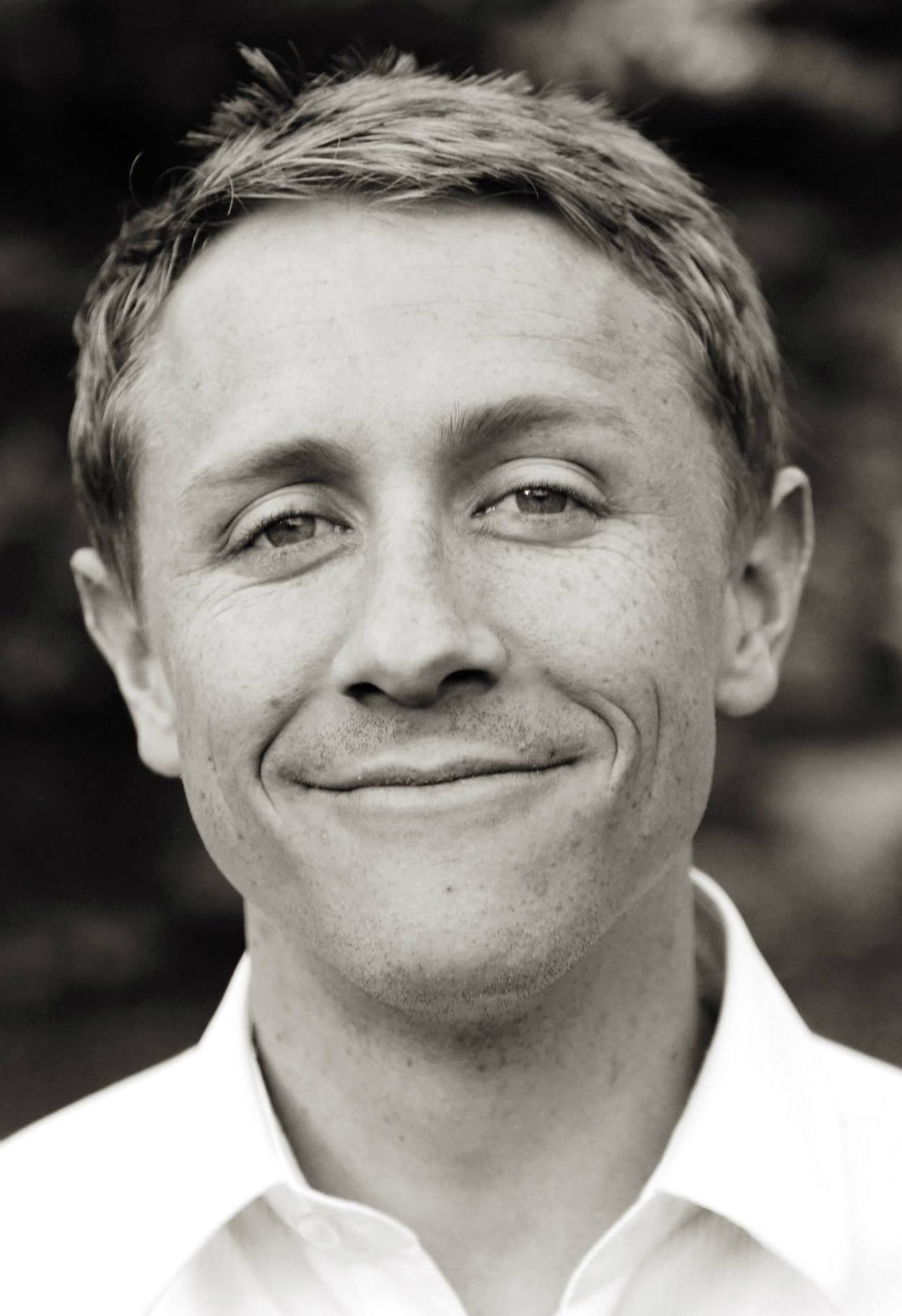
Hometown: Salt Lake City
Program: MS (Graduated December 2014)
Thesis Title: Evaluation of moisture and heat transport in the fast-reponse building-resolving urbantransport code QUIC EnvSim
Current Position: Lead Engineer / Simulation Scientist at ANSYS, Inc
Publications:
Contact: kevinabriggs@hotmail.com
Chad Nielson
Hometown: Salt Lake City
Undergraduate: University of Utah
Program: MS (Graduated August 2012)
Current Position: Engineer CR Bard
Thesis Title: Using particle image velocimetry (PIV) to investigate the effects of roughness on confined flow around a hydrofoil
Research Interests: Energy systems or anything else related to Sustainable Energy (on both the supply and demand side)
Contact: chadwickian@gmail.com
Chaoxun Hang
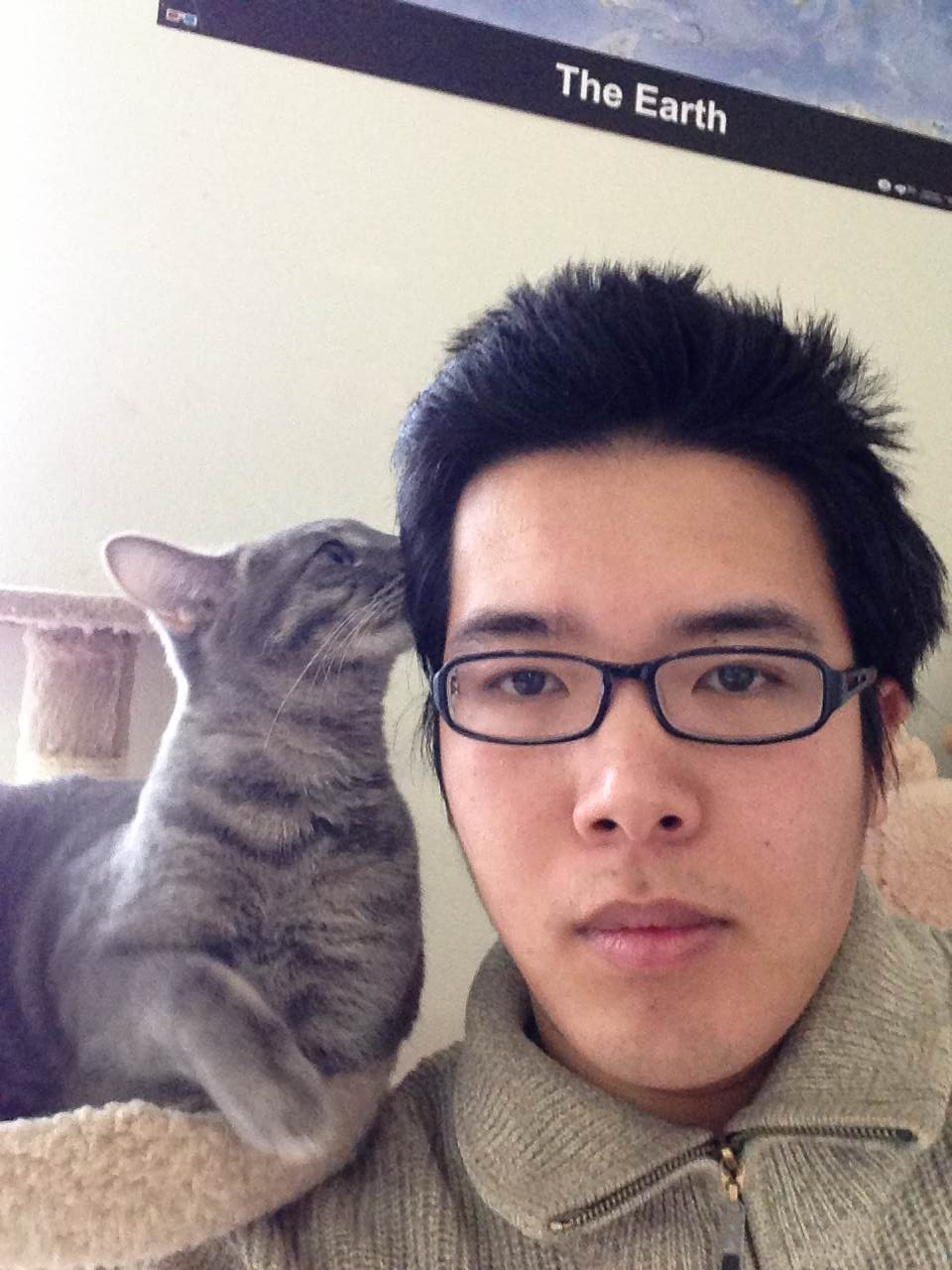
Hometown: Shanghai, China
Undergraduate: University of Science and Technology of China
Program: PhD (Graduated 2017)
Current Position: Post-doc, Monash University
Research Interests: My research is about boundary layer turbulence decay in the afternoon transition. I am also interested in both doing field experiments and analysising the data from them.
Contact: chaoxunhang@gmail.com
Dhiraj Kumar Singh
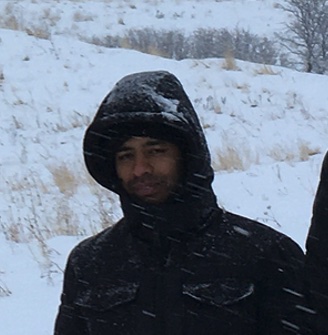
Hometown: Patna, India
Undergraduate degree: University of Delhi
MS degree: University of Delhi
PhD degree: JNCASR
Joined EFD Lab: 2018
Current Position: Postdoctoral researcher
Research Interests: My research interest is to understand the properties of hydrometeors, snowflakes in turbulence, 2-D wind velocity field using thermal image velocimetry (TIV), coastal fog, and radiation fog. Also interested in field and laboratory experiments.
Publications:
Contact: singhdhiraj11@gmail.com
Daniel Alexander

Hometown: Salt Lake City
Program: MS
Research Interests: Urban land surface modeling. Decay of Turbulent Kinetic Energy during the transition from the daytime convective boundary layer to the nocturnal boundary layer.
Publications:
Comparison of indoor/outdoor carbon content and time resolved PM concentrations for gas and biomass cooking fuels in Nodales, Sonora, Mexico, Heather A. Holmes, Eric R. Pardyjak, Scott O. Speckart, Daniel Alexander
Contact: dca10@utah.edu
Derek Jensen

Hometown: Sandy, Ut
Undergraduate: Brigham Young University
Program: PhD (Graduated 2016)
Current Position: Applied scientist at Amazon, formerly staff scientist at Lawrence Livermore National Laboratory
Key Contributions: Designed, deployed, and analyzed key parts of the flux stations that were part of the MATERHORN field campaign. Co-designed and deployed towers for a wind energy project in Belize. Developed UTESPac, software to analyze high-frequency atmospheric turbulence surface-layer data.
Contact: (801) 259-7837
Jeppesen Feliciano
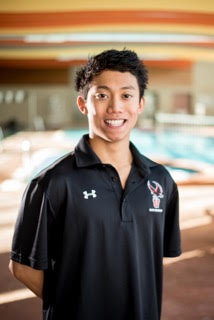
Hometown: West Jordan, UT
Undergraduate: University of Utah
Program: BS
Joined EFD Lab: 2015
Current Position: PhD student at Texas AM University
Contributions: Improving modeling in Uintah: MPMICE; aerodynamics - hyper-laminar flow control
Contact: jeppesen.feliciano@utah.edu
Loren Atwood
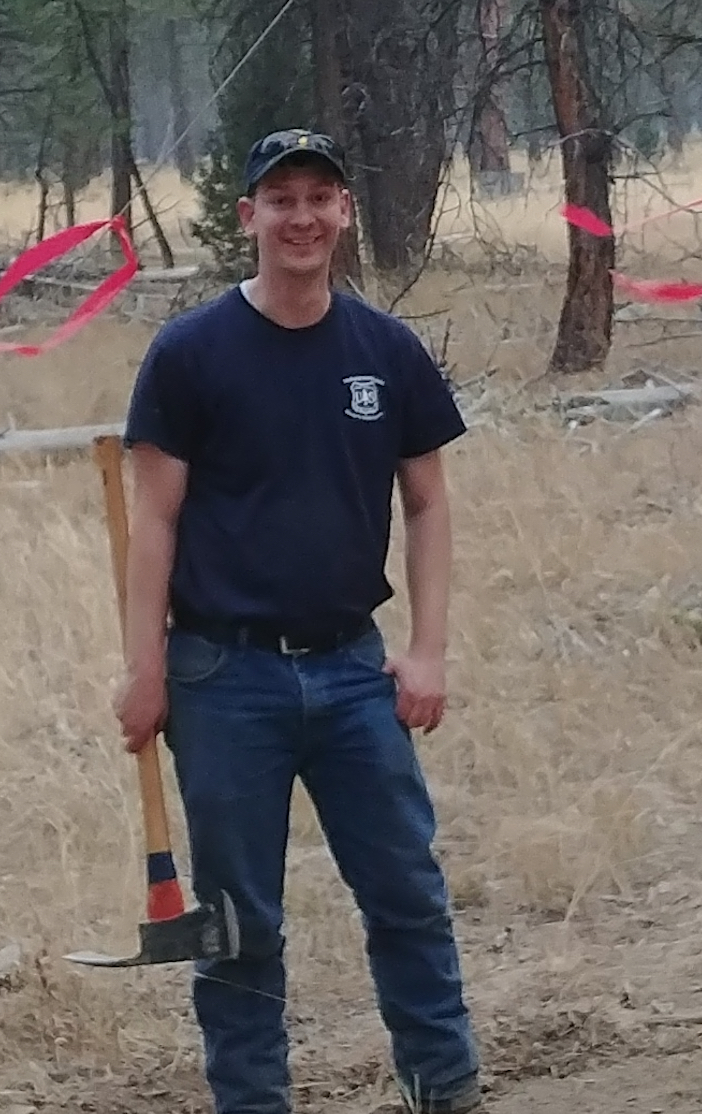
Hometown: Emmett, Idaho
Undergraduate: Brigham Young University, Provo
Program: MS Student
Joined EFD Lab: January 2018
Research Interests: Interested in the physics behind anything that involves modeling transport phenomena for environmental studies using CFD. Examples include smoke transport, emergency chemical release, particle growth, water droplet formation, atmospheric chemistry, and combustion. Currently learning about multiphase transport through porous media for use in a fuel moisture model for wildfires.
Contact: pianotocador@gmail.com
Nipun Gunawardena
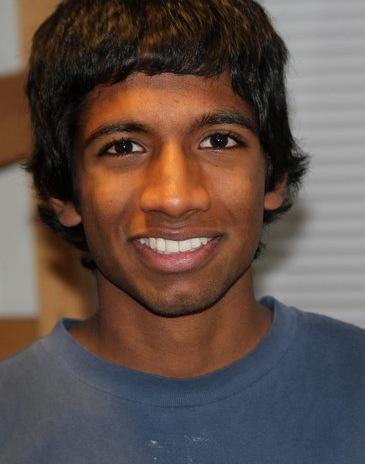
Hometown: Salt Lake City
Program: PhD (Graduated 2019)
Current Position: Postdoctoral researcher, University of Utah
Research Interests: Instrumentation, remote sensing, micro-controller based data logging, and programming
Link: Facebook
Contact: 1.nipun@gmail.com
Matthieu Renault
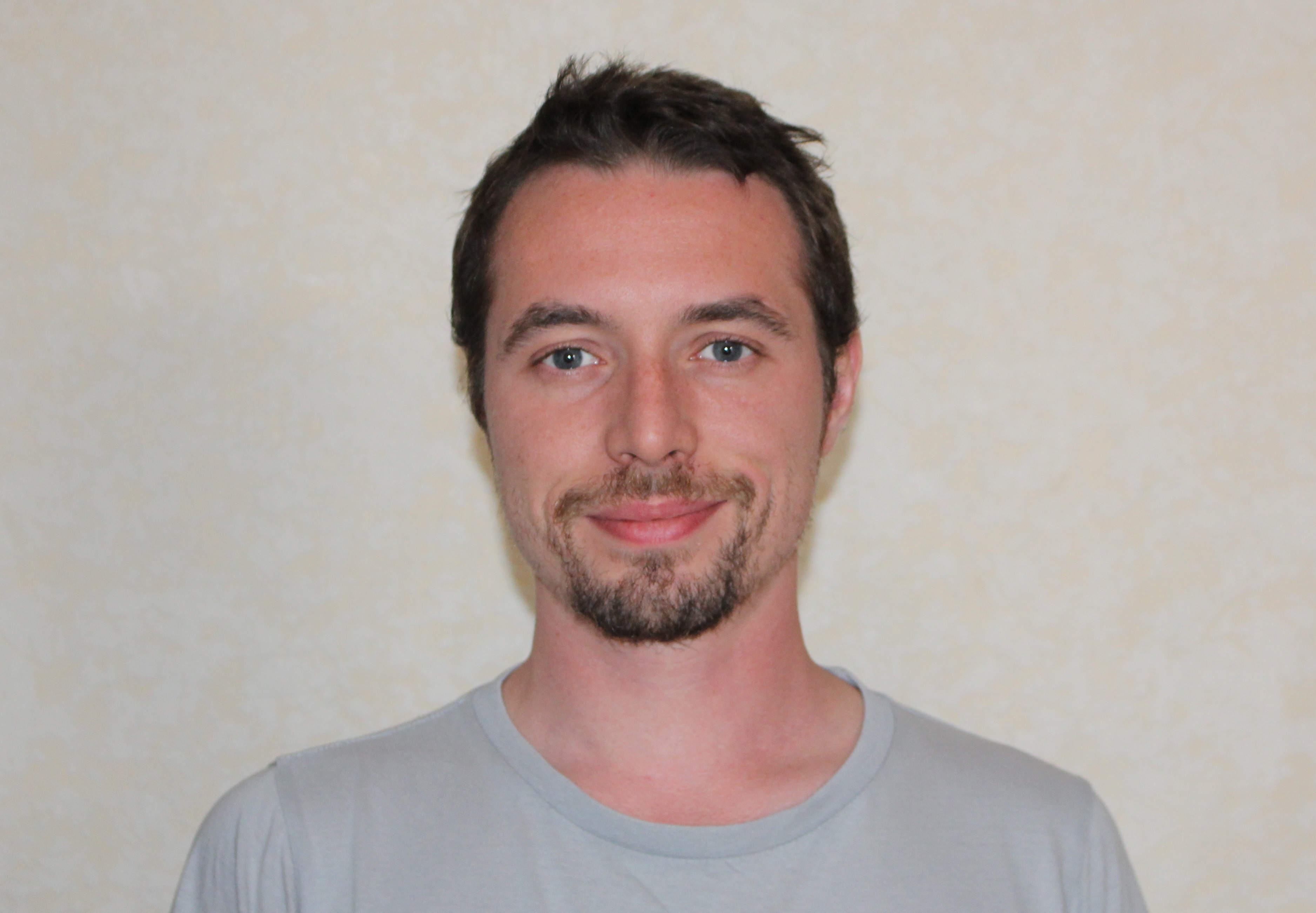
Hometown: Paris, France
Undergraduate: Université de Reims Champagne-Ardenne
Program: PhD Student
Joined EFD Lab:2018
Research Interests: Environmental science, wildfires, modeling and simulations, computational mathematics.
Contact: matthieu.renault@utah.edu
Scott Speckart

Hometown: Salt Lake City
Program: PhD (Graduated December 2013)
Current Position: Air Dispersion Modeler, Nevada Division of Environmental Protection
Research Interests: My interests include: the examination of atmospheric dispersion both numerically and experimentally. The numerical aspect spans from Lagrangian dispersion models to simpler Atmospheric dispersion models (ADE). Comparing these model results with measurements from the field is very rewarding. My research has implemented these models and methodology to understanding the problem of near source deposition of PM10 generated from traffic on unpaved roads.
I am also interested in the modeling of turbulence. This includes the implementation of simple mixing length models to more complex Large Eddy Simulation (LES). The application of these methods Atmospheric flows to smaller scale engineering flows is of great interest to me.
Publications:
Speckart, S., Pardyjak, E., Quick response modeling of windbreaks (Manuscript under preparation).
Speckart, S., Pardyjak, E., Veranth J.V., Parameters that influence the removal of PM10 in the near source zone downwind of unpaved roads: suggested by field studies and confirmed by numerical solution (Manuscript under preparation).
Holmes, H.A., Pardyjak, E.R., Speckart S.O., Alexander A., 2011. Comparison of indoor/outdoor carbon content and time resolved PM concentrations for gas and biomass cooking fuels in Nogales Sonora. Atmospheric Environment 45:7600-7611
Pardyjak, E.R., Speckart, S. O., Yin F., Veranth J.M., 2008. Near source deposition of vehicle generated fugitive dust on vegetation and buildings: Model development and theory. Atmospheric Environment 42: 6442–6452
J. Veranth, S. Speckart, B. Addepelli, and E. Pardyjak, 2010: Development of windbreak dust control models for roadway fugitive dust mitigation and transport flux, AAAR 29th Annual Conference, Portland, OR, 25-29 October 2010. Paper Number: 8.B.16
John M. Veranth, Kevin Perry, Eric Pardyjak, Scott Speckart, Raed Labban, Erin Kaser, John Watson, Judy C. Chow, Vic Etyemezian, Steve Kohl, “Characterization of PM2.5 Dust Emissions from Training/Testing Range Operations." Strategic Environmental Research and Development Program (SERDP) Project SI-1190 August 2008)
John Veranth, Scott Speckart, Eric Pardyjak, “Experimental and modeling study of particle deposition near roads.” (American Association for Aerosol Research (AAAR) Reno Nevada, September 2007)
H.A. Holmes, S. O. Speckart and E. R. Pardyjak, 2007: Comparison of the time evolved spatial distribution of urban PM2.5 concentrations during burning and wind-blown high PM events in Yuma, AZ, Amer. Meteor. Soc., Seventh Symposium on the Urban Environment, San Diego, CA, 10-13 September 2007, paper 8.5.
Eric Pardyjak, Prathap Ramamurthy, Scott Speckart, “Development of a windbreak dust control strategy tool for communities in arid climates such as the US-Mexico border region.” (Southwest Consortium for Environmental Research and Policy (SCERP) Annual Technical Conference, Tucson Arizona, December 2006)
Eric Pardyjak, Scott Speckart, “Assessment of windbreaks as a dust control strategy for communities in arid climates such as the US-Mexico border region.” (Southwest Consortium for Environmental Research and Policy (SCERP) Annual Technical Conference, San Diego January 2006)
Veranth , J., S. Speckart, E. Pardyjak, V. Etyemezian, Experimental and numerical studies of near source fugitive dust transport, American Association for Aerosol Research, 2005 Annual Conference, Austin, Texas October 17 - 21, 2005.
Scott Speckart, Eric Pardyjak, Vic Etyemezian, Fang Yin, John Veranth,” Computational Modeling of Near-Source Deposition of Fugitive Dust on Vegetative Surfaces.” (Air and Waste Management Association Conference, Minneapolis Minnesota, June 2005)
Sean Moran

Hometown: Cheyenne, Wy
Undergraduate: Gonzaga University
Program: MS (Graduated May 2012)
Current Position: Engineer - TD Williamson
Research Interests: Environmental Fluid Dynamics (experimental and computational) with a focus on momentum transport, particle (PM10 and PM2.5) transport and deposition, atmospheric turbulence, turbulent mixing and deposition of scalars with variable atmospheric stability, wind tunnel and field testing of turbulence within vegetative canopies (porous medium), grid-generated isotropic turbulence, sonic anemometry, and hot-wire anemometry. Additional research interests include Particle Image Velocimetry (PIV), Computational Fluid Dynamics (CFD), and Large-Eddy Simulation (LES).
Publications:
S.M. Moran, E.R. Pardyjak, J.M. Veranth, "The Role of Turbulence in Enhancing Deposition", (2012) Phys. Fluids, (publication under review)
S.M. Moran, E.R. Pardyjak, J.M. Veranth "Developing strategies for fugitive dust mitigation and transport flux using native vegetative windbreaks for dust control,” Paper #16, Air and Waste Management 104th Annual Conference and Exhibition, Orlando, FL, June 21, 2011.
Contact: sean.moran@utah.edu
Tim Price

Undergraduate: Brigham Young University Idaho - Mechanical Engineering
Program: PhD
Research Interests: Particulate dispersion and deposition, aerosol physics, aerosol sampling and measurement, atmospheric turbulence measurement, eddy covariance, environmental fluid dynamics, and instrument development.
Publications: E. Pardyjak, T. Price, J. Veranth, S. Moran, "Towards Understanding the Role of Turbulence in Enhancing Particle Deposition onto Vegetation" (American Association for Aerosol Research (AAAR) Minneapolis, MN, October 2012).
Contact: tim.a.price@utah.edu
Jae-Jin Kim
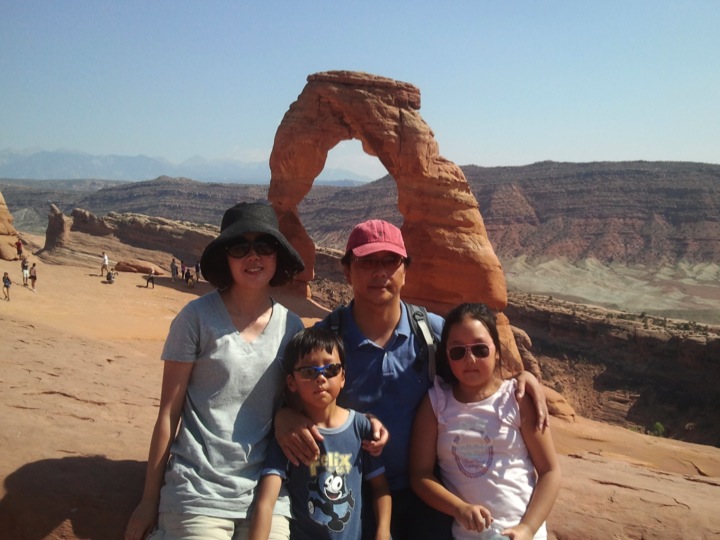
Education: Undergraduate University: Seoul National University - Atmospheric Science MS: Gwangju Institute of Science and Technology - Environmental Engineering PhD: Gwangju Institute of Science and Technology - Environmental Engineering
Program: Visiting Professor 2012-2014
Research Interests: Urban Atmospheric Environment
Publications:
(1) Kim, J.-J., and J.-J. Baik, 1999: A numerical study of thermal effects on flow and pollutant dispersion in urban street canyons. Journal of Applied Meteorology, 38, 1249-1261.
(2) Baik, J.-J., and J.-J. Kim, 1999: A numerical study of flow and pollutant dispersion characteristics in urban street canyons. Journal of Applied Meteorology, 38, 1576-1589.
(3) Baik, J.-J., R.-S. Park, H.-Y. Chun, and J.-J. Kim, 2000: A laboratory model of urban street-canyon flows. Journal of Applied Meteorology, 39, 1592-1600.
(4) Kim, J.-J., and J.-J. Baik, 2001: Urban street-canyon flows with bottom heating. Atmospheric Environment, 35, 3395-3404.
(5) Kim, J.-J., J.-J. Baik, and H.-Y. Chun, 2001: Two-dimensional numerical modeling of flow and dispersion in the presence of hill and buildings. Journal of Wind Engineering and Industrial Aerodynamics, 89, 947-966.
(6) Baik, J.-J., and J.-J. Kim, 2002: On the escape of pollutants from urban street canyons. Atmospheric Environment, 36, 527-536.
(7) Kim, J.-J., and J.-J. Baik, 2003: Effects of inflow turbulence intensity on flow and pollutant dispersion in an urban street canyon. Journal of Wind Engineering and Industrial Aerodynamics, 91, 309-329.
(8) Baik, J.-J., J.-J. Kim, and H. J. S. Fernando, 2003: A CFD model for simulating urban flow and dispersion. Journal of Applied Meteorology, 42, 1636-1648.
(9) Kim, S.-O., J.-J. Kim, S.-T. Yun, and K.-W. Kim, 2003: Numerical and experimental studies on cadmium (II) transport in kaolinte clay under electrical fields. Water, Air, and Soil Pollution, 150, 135-162.
(10) Kim, J.-J., and J.-J. Baik, 2004: A numerical study of the effects of ambient wind direction on flow and dispersion in urban street canyons using the RNG k-? turbulence model. Atmospheric Environment, 38, 3039-3048.
(11) Kim, S.-O., J.-J. Kim, K.-W. Kim, and S.-T. Yun, 2004: Models and experiments on electrokinetic removal of Pb(II) from kaolinite clay. Separation Science and Technology, 39, 1927-1951.
(12) Kim, J.-J., and J.-J. Baik, 2005: Physical Experiments to Investigate Urban Street-Canyon Flow. Advances in Atmospheric Science, 22, 230-237.
(13) Baik, J.-J., R.-S. Park, and J.-J. Kim, 2005: Dependency of the horizontal length of cavity region on Reynolds number and ridge asymmetry. Journal of the Korean Meteorological Society, 41, 473-479.
(14) Kim, J.-J., and J.-J. Baik, 2005: An investigation of flow and scalar dispersion in an urban area using a CFD model. Journal of the Korean Meteorological Society, 41, 821-837.
(15) Kim, J.-J., and J.-J. Baik, 2005: Classification of flow regimes in urban street canyons using a CFD model. Journal of Korean Society for Atmospheric Environment, 21, 525-535.
(16) Kim, J.-J., H.-J. Song, and J.-J. Baik, 2006: Modeling flow and scalar dispersion around Cheomseongdae. Wind and Structures, 9(4), 315-330.
(17) Baik, J.-J., Y.-S. Kang, and J.-J. Kim, 2007: Modeling reactive pollutant dispersion in an urban street canyon. Atmospheric Environment, 41(5), 934-949.
(18) Baik, J.-J., Y.-H. Kim, J.-J. Kim, and J.-Y. Han, 2007: Effects of Boundary-Layer Stability on Urban Heat Island Induced Circulation. Theoretical and Applied Climatology, 89(1-2), 73-81.
(19) Han, J.-Y., J.-J. Kim, and J.-J. Baik, 2007: Flow regimes of continuously stratified flow over a double mountain. Atmosphere, 17(3), 231-240.
(20) Song, C.-K. J.-J. Kim, and D.-W. Song, 2007: The effects of windbreaks on reduction of suspended particles. Atmosphere, 17(4), 315-326.
(21) Kim, J.-J., 2007: The effects of obstacle aspect ratio on surrounding flows. Atmosphere, 17(4), 381-391.
(22) Kang, Y.-S., J.-J. Baik, and J.-J. Kim, 2008: Further studies of flow and reactive pollutant dispersion in a street canyon with bottom heating. Atmospheric Environment, 42(20), 4964-4975.
(23) Kim, D.-Y., J.-J. Kim, J.-H. Oh, and P. Sen, 2008: A case study on emission management for reducing photochemical pollution over the Osaka Bay area. Asia-Pacific Journal of Atmospheric Sciences, 44(4), 341-349.
(24) Kim, J.-J., and D.-Y. Kim, 2009: Effects of a building's density on flow in urban areas. Advances in Atmospheric Science, 26(1), 45-56.
(25) Baik, J.-J., S.-B. Park, and J.-J. Kim, 2009: Urban flow and dispersion simulation using a CFD model coupled to a mesoscale model. Journal of Applied Meteorology and Climatology, 48(8), 1667-1681. DOI: 10.1175/2009JAMC2066.1
(26) Lee, T.-Y., D.-Y. Kim, J.-J. Kim, J.-K. Lee, 2009: Physicoshemical characteristics and estimation of H2S emission rate from municipal solid waste at the environmental facilities in Busan city. Korea Geo-Environmental Society. 10(2), 13-20.
(27) Lee, J.-H., J.-W. Choi, J.-J. Kim, Y.-C. Suh, 2009: The effects of an urban renewal plan on detailed air flows in an urban area. The Korean Association of Geographic Information Studies. 12(2), 69-81.
(28) Kim, J.-J., and J.-J. Baik, 2010: Effects of street-bottom and building-roof heating on flow in three-dimensional street canyons. Advances in Atmospheric Science, 27(3), 513-527, DOI: 10.1007/s00376-009-9095-2.
(29) Choi, J.-W., Y.-S. Lee, J.-J. Kim, 2010: Effects of meteorological and reclaiming conditions on the reduction of suspended particles. Journal of the Environmental Sciences. 19(11), 1423-1436.
(30) Cheong, H.-B., I.-H. Kwon, H.-G. Kang, J.-R. Park, H.-J. Han, and J.-J. Kim, 2011: Tropical cyclone track and intensity prediction with a structure adjustable balanced vortex. Asia-Pacific Journal of Atmospheric Sciences, 47(3), 293-303.
(31) Woo, J.-H., H.-S. Kim, S.-B. Lim, J.-J. Kim, J. Lee, R. Ryoo, H. Kim, and L. D. Minh, 2011: Constructing u-City of Seoul by future foresight analysis. Concurrency and Computation: Practice and Experience, 23(10), 1114-1126.
(32) Y.-S. Lee, J.-J. Kim, 2011: Effects of an apartment complex on flow and dispersion in an urban area. Atmosphere. 21(1), 95-108.
(33) Kim, M., R. Park, and J.-J. Kim, 2012: Urban air quality modeling with full O3-NOx-VOC chemistry: Implications for O3 and PM air quality in a street canyon. Atmospheric Environment, 47, 330-343.
(34) Yeom, J.-M., K.-S. Han, and J.-J. Kim, 2012: Evaluation on penetration rate of cloud for incoming solar radiation using geostationary satellite data. Asia-Pacific Journal of Atmospheric Sciences, 48(2), 115-123.
(35) Kim, D.-Y., J.-Y. Kim, and J.-J. Kim, 2012: A regression-based statistical correction of mesoscale simulations for near-surface wind speed using remotely sensed surface observations. Asia-Pacific Journal of Atmospheric Sciences, 48(4), 449-456.
(36) Choi, H.-W., D.-Y. Kim, J.-J. Kim, K.-Y. Kim, J.-H. Woo, 2012: Study on Dispersion Characteristics for Fire Scenarios in an Urban Area Using a CFD-WRF Coupled Model. Atmosphere., 22(1), 47-55.
(37) Kim, D.-Y., J.-Y. Kim, and J.-J. Kim, 2013: Mesoscale simulations of multi-decadal variability in the wind resource over the republic of Korea. Asia-Pacific Journal of Atmospheric Sciences, in press.
(38) Park, S.-J., D.-Y. Kim, and J.-J. Kim, 2013: Effects of Atmospheric Stability and Surface Temperature on Microscale Local Airflow. Atmosphere, in press.
Contact: jjkim@pknu.ac.kr
Website: http://urban.pknu.ac.kr

